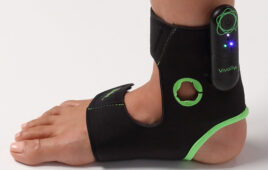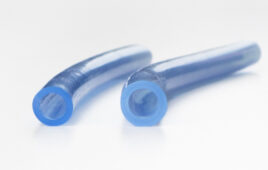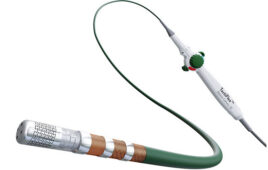Advances come with many benefits but also bring new challenges around cleaning and coatings, with their set of new solutions.
Jay Tourigny, MicroCare Medical

Innovation in lubricants and precision cleaning has had to keep up with innovation in medical device design. [Image courtesy of MicroCare Medical]
Here are three ways cleaning and coating advances are helping medical device designers overcome recent challenges:
Overcoming complex cleaning challenges
Making devices smaller and more portable has positive implications for patient compliance, but also creates new cleaning challenges for device manufacturers and design engineers. One is that smaller devices also mean smaller components and smaller spaces that require cleaning (and drying) during manufacture. Some cleaning solutions, such as water-based options, have a tendency to leave water spots and, because of surface tension, often aren’t able to easily clean small crevices. Devices must be cleaned to the highest of standards to ensure their readiness for the next step in the manufacturing process, whether it’s packaging, sterilization or coating. Any remaining particulate can lead to inconsistent outcomes that could have an impact on device performance. And if the device is not completely dry when it’s packaged, bioburden can occur, which in turn can lead to infection. This is especially common with aqueous cleaning solutions when water is trapped in the small crevices of a device.
What’s a design engineer to do? Luckily, rather than stifling progress on truly innovative device design, new solvent-based cleaning technologies address these challenges. Due to the solvents’ lower surface tension, they are better at cleaning small spaces and also dry completely, eliminating concerns that spots or other particulates could affect the next steps in the process. Furthermore, unlike water, solvents present an environment that is inherently hostile to bacterial growth, which significantly reduces the risk of bioburden.
Overcoming stacked tolerances
Recent medical device design incorporates single-use devices that make procedures less complicated. This often involves a device design that is minimally invasive, meaning a device that’s smaller and more complex, with many tiny parts. The higher the part count, the more likely stacked tolerances will be an issue for medical device design engineers and manufacturers. In engineering, tolerances refer to the permissible limit or limits of variation in a physical dimension. These dimensions leave some room for variation within certain limits, but when tolerances begin to stack up against each other, it often requires more force to actuate the device, ultimately affecting device performance.
Cost often plays a role in the decision-making process as design engineers and manufacturers think about dealing with stacked tolerances. Although it’s true that engineers can design everything with tighter tolerances to gain higher precision, this commonly means more frequent inspection and maintenance of tooling and fixtures during manufacture, driving up the unit price of a finished device.
Applying a low-friction coating such as dry lubricant using polytetrafluoroethylene (PTFE) particles or a lubricious coating such as silicone to the finished assembly to reduce friction can be a more cost-efficient solution. Dry lubricants typically reduce the force needed to actuate or execute a device by 25% to 30% and provide smooth actuation during use of the device. Compared to oil-based silicone coatings, dry lubricants are non-migrating, so they minimize clean room housekeeping requirements and will not transfer to packaging.
Overcoming lubricant application challenges
Many of these medical device design trends also create challenges in the coatings application. Because of the complex nature of some medical device designs, coatings cannot simply be applied in a “one-size-fits-all” way. New options for applying lubricant coatings address these challenges – such as dipping or wiping and brushing, which allow for consistent and uniform coatings to virtually any surface or internal geometry. Other application methods include air spraying, airless spraying, aerosol sprays, drying and heat-curing. A knowledgeable coatings partner can recommend the best process for your particular application.
Another challenge in lubricant application is environmental regulation. Carrier fluids once used to dilute lubricant dispersions are banned; their replacements either posed safety concerns or did not meet performance requirements. Luckily, new nonflammable carrier fluids meet environmental standards and have good solubility and materials compatibility.
The solution
There’s no question that advances in medical device design have contributed to improved patient outcomes, but also created new challenges for medical device design engineers and manufacturers. New advances and innovations in solvent and coatings technology mean that the solvent vapor degreasing process may not only be the most cost-effective solution but also the most environmentally sound option in designing smaller devices and components. By choosing an experienced cleaning and coatings provider to partner with, you’ll receive expert advice and the right recommendations for your specific needs.
Jay Tourigny is SVP at MicroCare Medical . He has been in the industry more than 25 years and holds a Bachelor of Science degree from the Massachusetts College of Liberal Arts. Tourigny holds numerous U.S. patents for cleaning-related products that are used on a daily basis in medical, fiber optic, and precision cleaning applications.




